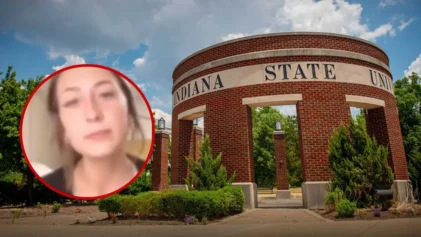As President Biden extended the application deadline for the Paycheck Protection Program until May 31, many eligible small business owners completed their applications and have been waiting for approval.
Funding for the program, however, has reportedly run out just a few days into the month of May.
Loan agents such as Womply sent out mass emails to applicants Tuesday evening updating them on the news of the funding shortage and encouraging business owners to not give up.
Womply is hopeful that if small business owners across the country contact the President Biden, the Small Business Administration, and their U.S. senators, and representatives, that more funding will be provided by Congress.
Reportedly, there is around $8 billion that has been set aside and is still available for community financial institutions that lend to businesses run by women, minorities, and other underserved communities. The New York Times reports that those lenders will be allowed to process applications until that money runs out.
That opening leads to the question of how can Black-owned small businesses successfully apply, receive approval, and ultimately loan forgiveness if more funds are released.
The SBA says “PPP loans can be used to help fund payroll costs, including benefits, and may also be used to pay for mortgage interest, rent, utilities, worker protection costs related to COVID-19, uninsured property damage costs caused by looting or vandalism during 2020, and certain supplier costs and expenses for operations.”
Joseph Ifebi, CEO and founder of KJ Attires in the Atlanta suburb of Morrow, is one small business owner who has applied for the PPP and is awaiting approval.
“I did apply, but I haven’t received an update just yet. The last update I got, they matched me with a lender and that’s it. That was, like, two weeks ago,” Ifebi said last week.
Ifebi’s clothing line was started in 2017 and features athletic wear that incorporates custom African designs on all of the pieces.
“I have the infrastructure put together from spending a lot of my hard-earned money, but now I’m at the point where we need some extra bit of funds to take it to the next level and keep pushing,” says Ifebi.
If used properly, the PPP loan essentially becomes a grant. However, there are terms of forgiveness for both PPP Draw 1 and PPP Draw 2 loans.
For PPP Draw 1, you must maintain employee staffing and compensation levels, spend the loan proceeds on payroll costs and other eligible expenses, and use at 60% for covering payroll costs.
For PPP Draw 2, you must maintain employee and compensation levels in the same manner as required for the First Draw PPP loan, spend the loan proceeds on payroll costs and other eligible expenses, and use at least 60% of the loan for covering payroll costs.
These terms must be met in the 8-to-24-week period following the loan disbursement.
Although the PPP is meant to help struggling businesses, many have taken advantage of the system and gotten into trouble.
Desola Shenbanjo, 36, who is originally from London, England, is a former SBA employee and an accounting professional who wants to encourage those still seeking the loan to educate themselves not just on the loan, but good lenders.
Two companies he recommends are Blue Vine, a direct lender, and the very popular loan agent Womply.
“The first thing Womply does is warn you: Do not lie, do not fabricate documents, and that’s what we want. We want more companies encouraging people to you know, have integrity.”
Because he understands the ins and out of the loan and the consequences of filing false information, he praises both companies for being “secure” and using extra precautions such as facial scans.
“There has been a lot of fraud. I want people to know if you’re having any kind of assistance, please know who you are getting assistance from,” said Shenbanjo. “Most people are going to assist you because they’re getting a certain percentage. They do not care if you go to jail or not.”
Shenbanjo went on to say, “Get what you’re supposed to have. If you’re claiming there is some kind of income that you’ve made, please file your taxes. Just stay legit and only work with legit companies.”
5 Things You Need to Know About the PPP (From SBA):
- Businesses eligible for the PPP Loan are: Self-employed individuals and independent contractors, small businesses with employee count of 500 or fewer, non-profits – 501(c)(3)(19) with 500 or fewer employees, and franchises on a location
- In order for small businesses to apply for loan forgiveness, documentation for all payroll periods that overlapped with covered period of the PPP loan, must be provided. This includes: Bank account statements, Tax Forms, Payroll tax filings, State quarterly business and individual employee wage reporting and unemployment insurance tax filings, and Payment receipts.
- Non payroll expenses covered by PPP include: Business mortgage interest payments, Business rent or lease payments, Utility payment, Operation expenditures related to business software, Property damage costs related to vandalism or looting, Payments made to a supplier of goods, and Worker protection expenditures (masks, sanitizer, etc.)
- If your request for PPP loan forgiveness is denied, you will have the right to appeal certain SBA loan review decisions.
- Your lender is responsible for notifying you of the forgiveness amount paid by SBA and the date on which your first payment will be due.
For more information on the PPP loan, you can visit https://www.sba.gov. To request more funding for the program, please reach out to your state and national officials.


